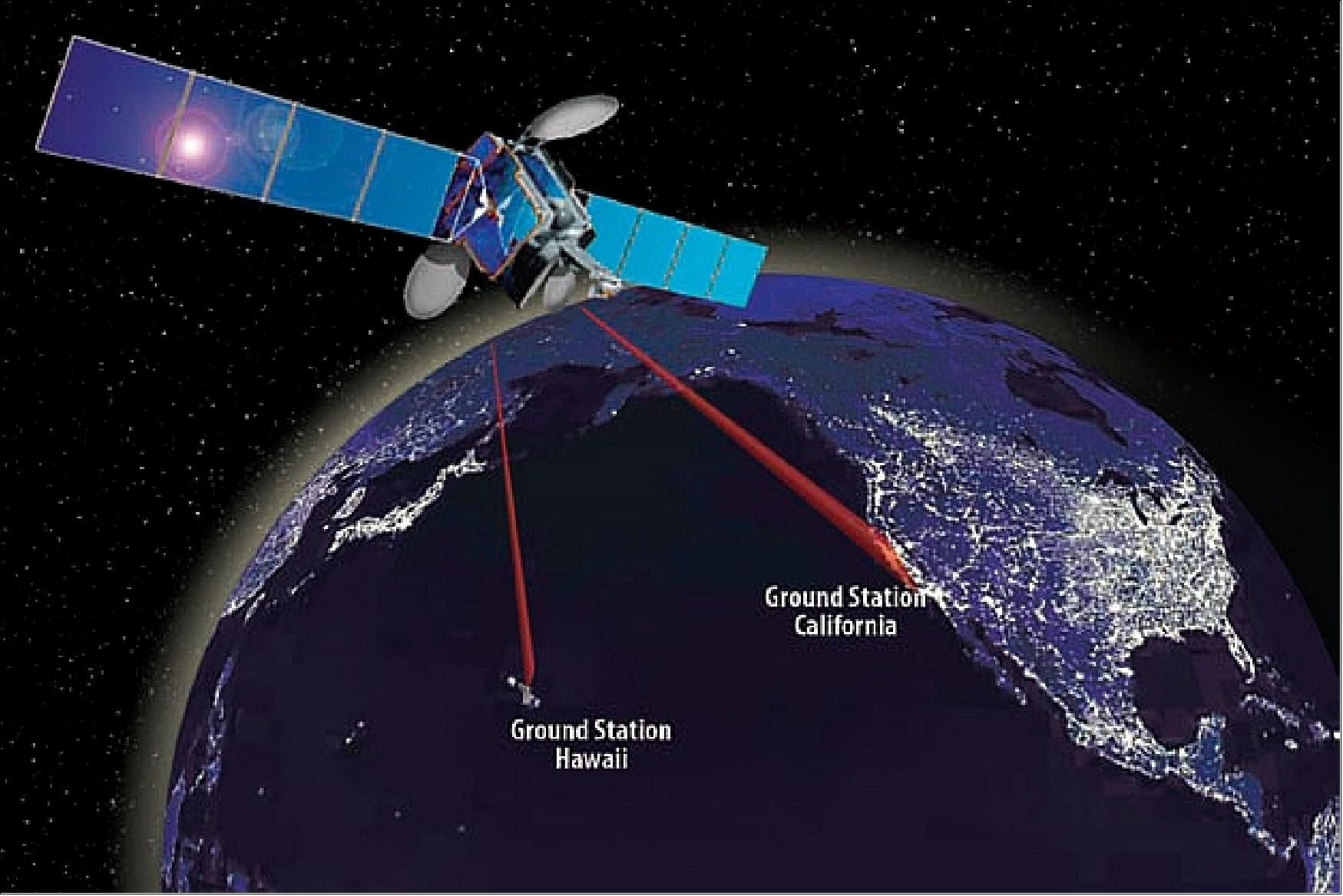
NASA Laser Communications Relay Demo Scheduled in June
Article by Carol Collins May 24, 2021 (executivebiz.com)
• The Goddard Space Flight Center in Greenbelt, Maryland; the NASA Jet Propulsion Laboratory in Pasadena, California; and the MIT Lincoln Laboratory in Lexington, Massachusetts have joined forces to send an optical module-equipped payload 22,000 miles above Earth in order to conduct a ‘Laser Communications Relay Demonstration’ (or ‘LCRD’).
• June 23rd, NASA will launch the LCRD optical module-equipped payload on the Department of Defense’s third Space Test Program mission satellite known as the ‘STPSat-6’, the DoD’s primary spacecraft. It will be carried into orbit by the Atlas V 551 rocket of the United Launch Alliance from Cape Canaveral Space Force Station in Florida.
• Once the optical module is in place, engineers on Earth will experiment on the data transmission process to test various operational situations and improve the tracking capabilities for mission performance. Using infrared lasers invisible to human eyes, the LCRD will attempt to execute data transfer from geosynchronous orbit to Earth at a bandwidth boost up to 100 times greater than radio frequency. NASA is hoping that the LCRD will be able to relay communications signals from the Earth to the Moon and Mars in future missions. (see 2:31 minute video below)
 NASA will launch a payload in June in an effort to enable laser- or optical
NASA will launch a payload in June in an effort to enable laser- or optical technology-based communications that can potentially deliver a bandwidth boost of 10 to 100 times than radio frequency equipment.
technology-based communications that can potentially deliver a bandwidth boost of 10 to 100 times than radio frequency equipment.
The Laser Communications Relay Demonstration, or LCRD, will be carried by the primary spacecraft of the Department of Defense’s third Space Test Program mission, NASA said Saturday.
The optical module-equipped payload on STPSat-6 will lift off June 23 from Cape Canaveral Space Force Station in Florida,  through the Atlas V 551 rocket of the United Launch Alliance.
through the Atlas V 551 rocket of the United Launch Alliance.
Using infrared lasers invisible to human eyes, the LCRD will try to execute data transfer from geosynchronous orbit to Earth at a rate of 1.2 Gbps.
When the optical module is placed 22,000 miles above Earth, engineers will experiment on the data transmission process to test various operational situations and improve the tracking capabilities for actual mission performance.
The space agency also plans to use LCRD to examine the possibility of enabling laser communications for missions to the Moon and Mars in the future.
The Goddard Space Flight Center in Greenbelt, Maryland, is leading the LCRD mission together with the Jet Propulsion Laboratory of NASA in Southern California and the MIT Lincoln Laboratory.
2:31 minute video demo of the Laser Communications Relay
(‘NASA’s Marshall Space Flight Center’ YouTube)
FAIR USE NOTICE: This page contains copyrighted material the use of which has not been specifically authorized by the copyright owner. ExoNews.org distributes this material for the purpose of news reporting, educational research, comment and criticism, constituting Fair Use under 17 U.S.C § 107. Please contact the Editor at ExoNews with any copyright issue.
'STPSat-6' satellite, Cape Canaveral Space Force Station, Department of Defense, Laser Communications, MIT Lincoln Laboratory, NASA, NASA Jet Propulsion Laboratory, The Goddard Space Flight Center